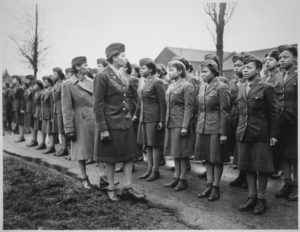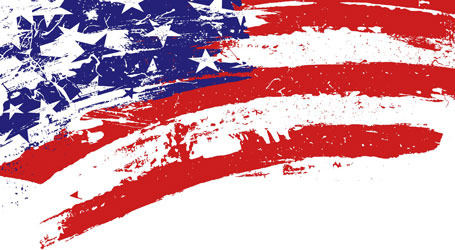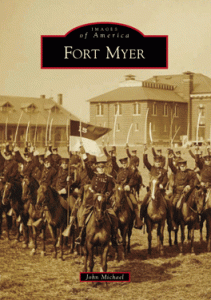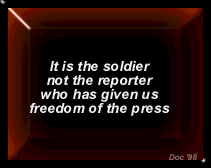The Girls Who Stepped Out of Line:
Untold Stories of the Women
Who Changed the Course
of World War II
Paperback – May 1, 2022
by MG Mari Eder USA RET. (Author)
ABOUT THE BOOK:
An Amazon Best Book of the Month
For fans of Radium Girls and history and WWII buffs, The Girls Who Stepped Out of Line takes you inside the lives and experiences of 15 unknown women heroes from the Greatest Generation, the women who served, fought, struggled, and made things happen during WWII―in and out of uniform, for theirs is a legacy destined to embolden generations of women to come.
The Girls Who Stepped Out of Line are the heroes of the Greatest Generation that you hardly ever hear about. These women who did extraordinary things didn’t expect thanks and shied away from medals and recognition. Despite their amazing accomplishments, they’ve gone mostly unheralded and unrewarded. No longer. These are the women of World War II who served, fought, struggled, and made things happen―in and out of uniform.
Liane B. Russell fled Austria with nothing and later became a renowned U.S. scientist whose research on the effects of radiation on embryos made a difference in thousands of lives. Gena Turgel was a prisoner who worked in the hospital at Bergen-Belsen and cared for the young Anne Frank, who was dying of typhus. Gena survived and went on to write a memoir and spent her life educating children about the Holocaust. Ida and Louise Cook were British sisters who repeatedly smuggled out jewelry and furs and served as sponsors for refugees, and they also established temporary housing for immigrant families in London.
Retired U.S. Army Major General Mari K. Eder wrote this book because she knew their stories needed to be told―and the sooner the better. For theirs is a legacy destined to embolden generations of women to come.

WAC MAJ Charity Adams inspecting her battalion
African American Women in the Military During WWII
Courtesy of the National Archives
Exploring History with the National Archives Special Media Division
“As we make our way through Women’s History Month, we are reminded of the incredible accomplishments of women throughout history. This year, we would like to focus on women who served, particularly African American women in World War II. For some great background information, be sure to visit our previous blog – Their War Too: Women in the Military During WWII.
America’s entrance into World War II after the attack on Pearl Harbor in December of 1941 was met with pride and patriotism across the country. American citizens surged to enlist in all branches of the US Military and women wanted to serve their country too. Their challenge actually began earlier that year, in May of 1941. Dovey Johnson Roundtree, who would go on to become one of the first 39 black women Officers, worked with Eleanor Roosevelt, Congresswoman Edith Nourse Rogers, and Mary McLeod Bethune to draft the Women’s Army Auxiliary Corps (WAAC) resolution that was presented to Congress. With support from the General of the Army George Marshall, the bill passed both the House of Representatives and then the Senate in May of 1942. With the WAAC in place, the War Department announced that it would follow Army policy, and admit black women with a 10-percent quota.
Before recruitment and training even began, African American women faced the hurdle of discrimination. Applications for the first contingent of officer candidates were available at the United States Post Office, and many African American women who applied were turned away on the spot, simply because of their race. There are no telling how many women this discouraged, as discrimination became a recurring problem for WAC recruitment.
The first class of officer candidates consisted of 440 women – 39 of whom were black. Not only did black women face the hardship of discrimination outside of the military, but faced segregation within. Black WAACs were in a separate company than white trainees and had separate lodging, dining tables, and even recreation areas. At the end of the training, there were only 36 black women of the 436 WAACs to graduate with the rank of the third officer.
The Army wasn’t the only branch where women wanted to serve, and other women’s units were established. Women who wanted to help the Navy joined the WAVES, the Coast Guard had the SPAR, the Air Force had WASP, and the Marines Corps had the WR. The WAAC however was the only branch to allow black women from its inception. Despite this fact, recruitment of black women proved difficult. Segregation meant many black women didn’t want to join, and black WAACs still faced discrimination. The Black Press Pool helped monitor and speak out against discrimination in the military, including within the WAACs. Reports came out that black WAACs with college degrees were being assigned to clean floors, and given laundry duty. The press demanded a black woman to be assigned to the WAAC director’s office to monitor and address discrimination complaints.
In July of 1943, it was announced that the women of WAAC would be classified under the same ranks as soldiers, a big victory for women’s equality. The unit’s name changed to the Women’s Army Corps (WAC). African American WACs didn’t receive the same specialized training that white WACs had, and most were trained in motor equipment, cooking, or administrative work. One of the biggest complaints amongst African American WACs was that there were no black WACs overseas. Unfortunately, the WAC had to abide by all Army regulations, and overseas commanders had the right to designate the race or color of units being sent, and no black WACs were requested. Eleanor Roosevelt intervened on their behalf, however, and the War Department directed commanders to accept African American WACs.
The 6888th Central Postal Directory Battalion was a unit of more than 800 black WACs and was the only black WAC unit to serve overseas. They arrived in England in February of 1945, with the task of working through a huge backlog of mail meant for the troops. General Eisenhower wanted this mail to be delivered as a means of helping with the morale of the troops. When the WACs arrived, they found the building stacked to the ceiling with mailbags, and another room filled with packages of spoiled food and gifts, along with rodents.
Charity Adams, one of only two black WACs promoted to the rank of major during World War II, was the commander of this unit. She was proud of the work her unit did, performing their tasks in record time. Working in three shifts around the clock, they were able to sort all of the mail in half the amount of time expected, just 3 months. Each eight-hour shift averaged more than 65,000 pieces of mail sorted. Once finished in Birmingham, the unit went on to Rouen, France, and ultimately Paris.
While the WAC was by far where most black women served, it wasn’t the only place. World War II saw about 500 black nurses in the army, the WAVES eventually saw almost 100 black women, and the Coast Guard’s SPAR had 5 black women who served. The Army Nurse Corps initially followed the War Department guidelines of the quota system, which severely limited the number of black women admitted. It wasn’t until a severe nursing shortage that the quota was lifted.
Despite the importance that African American women played in the war effort, little is seen of them in war production materials. They are conspicuous only in their absence from recruitment films, as the topic of race was generally avoided. We were fortunate enough to find some footage from Record Group 111 (Records of the Office of the Chief Signal Officer) Series ADC (Moving Images Relating to Military Activities) that featured black WACs, including Major Charity Adams. These women not only faced the scrutiny and prejudice of friends and family for wanting to join the military, but they also had to deal with discrimination and segregation. It was challenging and often thankless, but they saw the importance of their work and persevered. These women were truly trailblazers, opening up opportunities for women of color in an area previously dominated by white men, and for that, they are honored.
The two clips from the Records of the Office of the Chief Signal Officer highlighted in this post can be viewed in their entirety below.
by Theresa Benner McCullough (Author)
ABOUT THE BOOK:
I Volunteered for This is the fascinating personal narrative of Theresa Benner McCullough’s enlistment in the U.S. Army after college and her subsequent deployment to Afghanistan with the 82nd Airborne Division.
One of only a handful of females at a remote base, Sarkari Karez, was sexually assaulted by a male soldier one night. Then she had to deal with the invasive criminal investigation and insensitive male-dominated command structure to bring the “perp” to justice.
Each entry written in a personal journal style gives insight into a young female soldier’s daily life living in a war-torn combat zone. I Volunteered for This provides hope and encouragement to any woman who has experienced sexual trauma and is suffering from Post-Traumatic Stress Disorder (PTSD).






